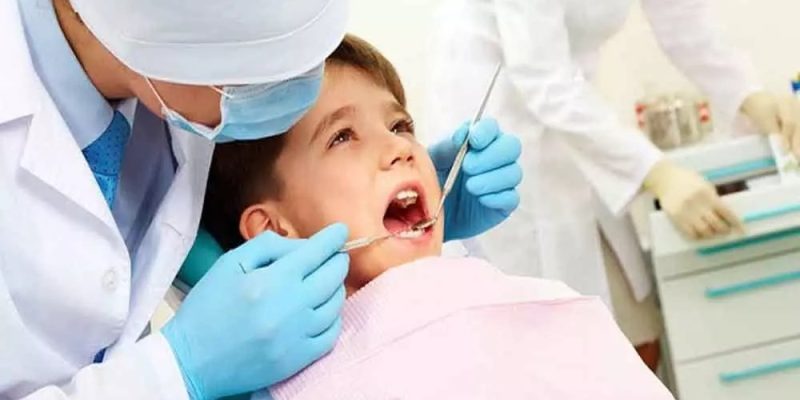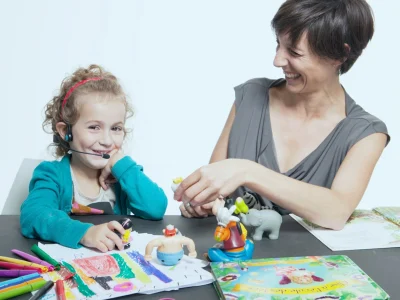
The prevalence of dental caries (tooth decay) in children varies from one child to the other, but it is a common problem. In the United States, about 40% of children between the ages of 2 and 11 have at least one decayed tooth. The prevalence increases with age, reaching 60% for 12-year-olds. In fact, one in every five children has a tooth that’s decayed beyond repair by the time they turn 14.
Parents must teach their kids proper dental hygiene and ensure they visit the dentist regularly. Knowing how to spot symptoms of oral health problems in your child is also important.
Here are some common signs of oral health problems in children:
1. Toothache
This is the most common sign of dental health problems in children and should not be ignored. Several conditions, such as tooth decay, gum disease, or an infection, can cause dental pain. A toothache may also signal that you need to see the dentist sooner rather than later. If your child has a toothache, don’t wait until they are in extreme pain before scheduling an appointment with California Kids dental specialists.
.2. Changes in appetite and eating habits
Changes in appetite and eating habits can indicate oral health problems in children if they persist over time. If your child has issues with chewing or swallowing food, it could be due to an infection or other problems with their teeth or mouth. The best way to prevent this problem is by regularly visiting the dentist every six months for cleaning and check-ups. If you notice these changes, schedule an appointment as soon as possible.
3. Mouth sores
These sores appear outside the mouth and can range from mild to severe. They can be painful. Common causes include braces rubbing against teeth or gums, cuts on lips or inside cheeks from biting fingernails, or small scrapes from eating hard foods such as nuts or popcorn kernels. If a person has mouth sores chronically (more than once every month), see a dentist immediately because this could signal an infection.
4. A change in your child’s speech
If your child doesn’t sound like themselves, they might have a foreign object in their mouth that’s blocking air from flowing properly through their mouth. For example, if they have a wad of chewing gum stuck in their teeth or throat, this could cause them to mumble their words or slur them together.
5. Cavities
Cavities are holes inside a tooth when bacteria eat away at the tooth enamel. Young children can get cavities because they don’t always brush well and often don’t rinse after eating sugary foods. Cavities are painful and need to be treated by a dentist immediately.
6. Bad breath (halitosis)
Children do not have the same bacteria in their mouths as adults, so they may not have bad breath. However, if your child has poor dental hygiene or hasn’t been to the dentist in a while, this could indicate an underlying problem. You should talk to your dentist about your child has bad breath.
Here are some of the most common issues:
Tooth decay: This is the most common problem among kids. It happens when bacteria in the mouth break down sugars from sticky foods like candy and sugary drinks like soda, creating acids that eat away at tooth enamel.
Tooth pain: When tooth decay reaches deep inside a tooth, it can cause pain. Your child may wake up with a sore tooth or be irritable during or after eating certain foods. If your child’s gums become red and swollen or the inside of his cheek feels hot or tender, he may have an infection that needs medical treatment.
Toothache: If your child has a severe toothache, he might not want to eat anything at all, even if he has painkillers prescribed by your dentist. He might also have trouble sleeping because of discomfort while lying down.
Orthodontic problems: Orthodontic problems are children’s most common oral health problems. The most common condition is having crooked teeth or an abnormal bite. In many cases, orthodontic treatment can begin as early as age 7. But it’s never too late to begin treatment if your child has orthodontic issues.
Pediatric gingivitis: This is a common oral health problem in children. It causes inflammation of the gums and sometimes the surrounding tissues. This can lead to bleeding, swollen gums, and tooth decay. The main cause of pediatric gingivitis is poor oral hygiene. Other contributing factors include a poor diet, a family history of periodontal disease, and infections caused by bacteria such as streptococcus mutans.
Grinding: Grinding is a common problem for children. It’s also more common in children who have a history of thumb sucking or pacifier use or if they have an underlying health condition like Down syndrome or autism. Children who grind their teeth may experience pain, soreness, or tenderness in their jaw muscles and joints.
What is the Best Treatment Option for Children’s Oral Health Problems?
The best treatment option for children’s oral health problems depends on the specific issue. For example, if your child has a toothache or fractured tooth, you may want to visit an emergency dentist in case of an abscess. If your child has a cavity, the dentist may recommend filling it. Fillings are one of the most common treatments for cavities in children because they are safe, affordable, and effective at reducing pain and discomfort from the cavity.
The American Dental Association recommends that dentists perform dental exams on infants by their first birthday and again when they turn three years old. At these visits, dentists will check for any signs of decay or damage to baby teeth that could lead to more serious dental problems later in life. If your child shows signs of developing cavities or gum disease, they may need additional care or treatment beyond what is available at an urgent care center or pediatric clinic.
Conclusion
If your child has a dental problem, the first step to getting help is to schedule an appointment with a pediatric dentist. Your child’s dentist will tell you how serious the problem is and what treatment options are available.







